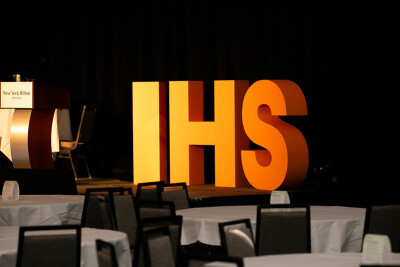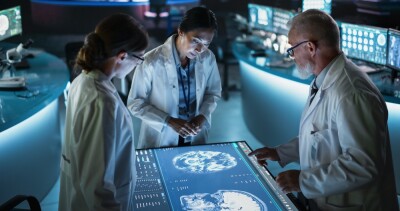Q&A: Repairing Brain Tissue with the Hyperoxic-Hypoxic Paradox

According to Shai Efrati, MD, the hyperoxic-hypoxic paradox, a protocol in hyperbaric oxygen therapy (HBOT), can activate the body's regenerative process and generate new neurons and blood vessels in the brain. "And, of course, that's been reflected in better cognitive function and performance," he explained.
At the Integrative Healthcare Symposium in February, Dr. Efrati, Director of the Sagol Center for Hyperbaric Medicine and Research at Shamir (Assaf-Harofeh) Medical Center in Israel, discussed his protocol for hyperbaric oxygen therapy and its clinical applications. After his presentation, we met with Dr. Efrati and asked about his personal experience with the treatment, how it works, and what it might look like in the future.
Integrative Practitioner: Can you walk me through this protocol?
Shai Efrati, MD: It's not medicine you take into your body. In hyperbaric medicine, we use the environment as a tool to affect the biological process. So, when you're getting that treatment, you're going into a chamber, which is like an airplane seat. You sit inside, and then we change the environment within the chamber, changing the pressure and the oxygen concentration. By doing that, we're affecting the biology of the cell.
Integrative Practitioner: Who is a good candidate for this?
Dr. Efrati: Classic candidates are people who want to enhance their cognition. Studies show its effectiveness for what we call age-related cognitive decline. We also have studies in patients with traumatic brain injury and post-COVID patients, but the goal is that we look at the brain as a tissue. If we see a wound or an injured place in the brain, we can repair the wound with this specific treatment, and brain function in that area will improve.
Integrative Practitioner: How realistic is it for it to be widely used? How accessible is the therapy now?
Dr. Efrati: Everything at the beginning is less accessible, even this cellular phone you use. Every new technology is first available to the people who can afford it. But later, it becomes less expensive, and then more and more people can use it.
Integrative Practitioner: And how effective is it? Is it just a preventative treatment?
Dr. Efrati: It's probably one of the most potent interventions today regarding the brain because it's not reducing the decline. It actually improves tissue function and, therefore, cognitive function.
The word preventative, it's a word that I am not familiar with. If you improve your memory, improve your attention, improve information processing speed, it’s not preventing; it’s enhancing. It enhances your cognitive performance but also repairs damaged tissue that could be caused by stroke, traumatic brain injury, or microvascular damage, just like what happens with aging. So, you have those two elements.
Integrative Practitioner: What are three things that you want people to know about the hyperoxic-hypoxic paradox?
Dr. Efrati: The first thing is that the brain can be repaired and regenerated, and we should look at the brain just like any other tissue in our body.
The second take-home message is that an intervention doesn't necessarily need to be a chemical that we take in our body. This therapy can trigger the body to do what it knows best, which is to repair damaged tissue. This triggering can be done by changing environmental exposure.
The third take-home message is that, unfortunately, there is some misappropriation of the research that we and others are doing. People are taking some sack full of air or tubes and calling it hyperbaric oxygen therapy. This is not it. This is not what the studies are done on, so if you want to get hyperbaric oxygen therapy, you should do it in an appropriate medical-grade facility. Otherwise, it's not only ineffective but can also be harmful.
Integrative Practitioner: What are the guidelines for referring a patient for this HBOT protocol?
Dr. Efrati: If you want to see a classical center that works at a medical grade level, you can look at the Aviv Clinics in the United States. For example, the biggest and most advanced center in the U.S. is located in Florida, near Orlando.
So, before starting treatment, you must do a meaningful evaluation. You should perform functional MRI metabolic imaging of the brain, assess cognitive function, and evaluate whether this individual can safely enter a hyper-pressure environment. Only after doing that should a patient consult with a professional who can determine their risk and the benefits they can gain from the therapy.
Integrative Practitioner: How long is the therapy?
Dr. Efrati: To generate meaningful angiogenesis and neurogenesis, you have to get 60 sessions if we're speaking about the brain. Those will be daily sessions five days a week. Every session is two hours long, so it's a big commitment.
Integrative Practitioner: Is this something that requires upkeep, or are the results permanent?
Dr. Efrati: It depends on the primary cause. For example, if you are treating patients who have post-COVID, the damage was caused by COVID. So, there is an injury, and once that's been repaired, it's yours. If you had a stroke, it's yours. If you have some age-related cognitive decline, you will improve, but of course, you will continue to age. And the weight of the decline depends on your biology and behavior, what you put in your body, what you do, and what you don't do. However, generally speaking, with age-related cognitive decline, the results hold for more than two years, which is quite significant.
Integrative Practitioner: Have you tried the therapy yourself?
Dr. Efrait: Yes, after we finished the first study on a postdoc patient, I was looking at the brain imaging and saw unbelievable results. And I said, “Oh my god, what is this? I need to try it.” Now, I do the treatment for myself, my father, and my wife.




















SHARE